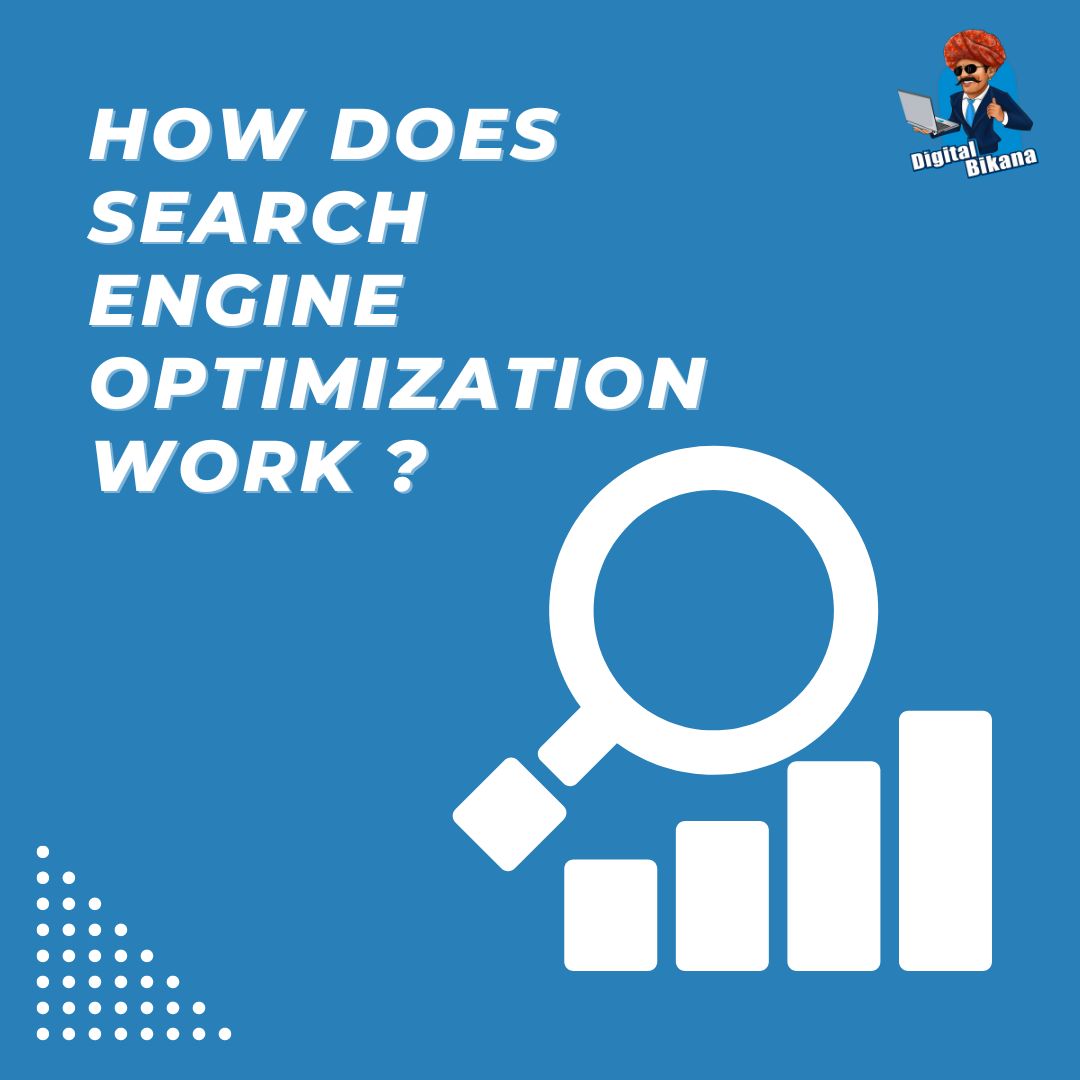How does Search Engine Optimization Work?
In this article we are going to talk about How does search engine optimization work? In the current era of digital dominance, the significance of search engine optimization (SEO) cannot be overstated when it comes to establishing a prosperous online presence. Whether you run a business, maintain a personal blog, or manage a website, understanding how SEO works can greatly impact your visibility and organic traffic from search engines.
How does Search Engine Optimization Work?
This article aims to provide a detailed overview of SEO and shed light on the key factors and strategies involved.
1. Understanding Search Engines
Search engines like Google, Bing, and Yahoo serve as the primary gateway for users to discover information on the web. They employ complex algorithms to crawl and index websites, determining their relevance and ranking them in search results.SEO is all about making your website more visible on search engines. By optimizing your site, you increase the chances of appearing higher in the search results when people look for something online.

2. On-Page Optimization
On-page optimization refers to the techniques used to optimize individual web pages for better search engine rankings. Key on-page factors include:
a. Keyword Research
Identifying relevant keywords and phrases that users are likely to search for. These keywords should be strategically placed in page titles, headings, meta tags, and throughout the content.
b. Content Creation
Creating high-quality, original, and engaging content that caters to users’ search intent. Content should be well-structured, informative, and include relevant keywords naturally.
c. Meta Tags
Optimizing meta tags, including title tags and meta descriptions, to accurately describe the content of each page and entice users to click through to your website.
d. URL Structure
Using descriptive and concise URLs that include relevant keywords.
e. Internal Linking
Linking between pages within your website to improve navigation, user experience, and help search engines understand the site’s architecture.
3. Off-Page Optimization
Off-page optimization involves activities carried out outside your website to enhance its visibility and credibility. Key off-page factors include:
a. Link Building
Earning high-quality backlinks from reputable and relevant websites. Backlinks are like “votes of confidence” for your website. They let search engines know that other websites trust and find your site reliable. This helps search engines see your website as authoritative and trustworthy.
b. Social Signals
Leveraging social media platforms to increase brand visibility and drive traffic to your website. Engagement on social media platforms, including likes, shares, and comments, can have an indirect impact on the rankings of search engines.
c. Online Reputation Management
Monitoring and managing your online reputation to build trust and credibility among users and search engines.
4. Technical SEO
Technical SEO is all about improving the behind-the-scenes aspects of your website. It focuses on making your site easier for search engines to explore, understand, and include in their results. This includes things like ensuring all the pages can be found by search engines, making sure they can read and understand the content, and enhancing the overall performance of your website. Key technical factors include:

a. Website Speed
Ensuring fast loading times to provide a positive user experience and improve search engine rankings.
b. Mobile-Friendliness
Optimizing your website to be mobile-responsive, as search engines prioritize mobile-friendly sites due to the increasing number of mobile users.
c. Site Structure
Creating a well-organized site structure with clear navigation, XML sitemaps, and breadcrumbs for search engines to understand and crawl your website effectively.
d. Canonicalization
Avoiding duplicate content issues by setting canonical tags to indicate the preferred version of a webpage.
5. User Experience and Engagement
The primary objective of search engines is to provide users with the most relevant and exceptional search results possible. Therefore, user experience (UX) and engagement metrics have become crucial ranking factors. Factors that impact UX and engagement include:
a. Mobile Responsiveness
Ensuring your website is optimized for mobile devices to provide a seamless experience across all screen sizes.
b. Page Load Speed
Optimizing your website’s performance to reduce load times and prevent users from leaving due to slow-loading pages.
c. Bounce Rate
Keeping users engaged by providing relevant and valuable content, thus reducing bounce rates.
d. User-Friendly Navigation
Creating intuitive navigation menus and site structures that allow users to easily find the information they’re seeking.
You can also checkout this digital marketing institute to learn digital marketing course by enrolling in our course Or Contact Digital Bikana on +91-8949483728
Conclusion:
Search engine optimization is an ever-evolving discipline that requires a deep understanding of search engine algorithms, user behavior, and industry trends. By implementing on-page and off-page optimization techniques, focusing on technical aspects, and prioritizing user experience, you can improve your website’s visibility and drive organic traffic from search engines. Remember, SEO is a long-term endeavor that requires ongoing monitoring, adaptation, and optimization to stay ahead in the competitive online landscape. So, Now I hope you have understood about How does Search Engine Optimization Work?

